#valide mara hatun
Text
Mara Brankovic

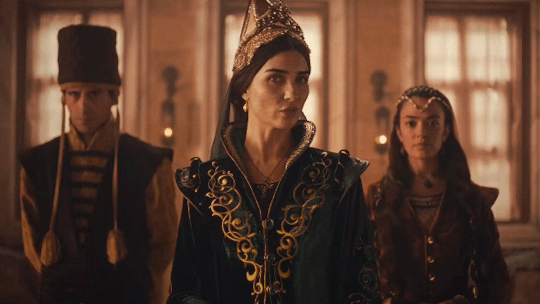
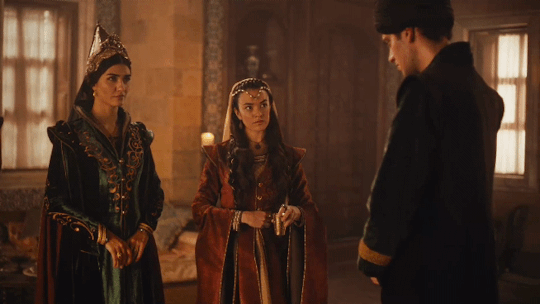
#history#valide mara hatun#princess mara#mara brankovic#ottoman history#ottoman#ottoman empire#tuba buyukustun#tuba büyüküstün#Gulbahar hatun#That crown reminds me of something👑👑#rise of empires ottoman#rise of empires: ottoman#mehmed vs vlad#women in history#Women in the ottoman empire
95 notes
·
View notes
Text
Marriages /Házasságok
The institution of marriage in the Ottoman Empire has always been an interesting topic. There was a great difference in the general conception of the marriages of sultans, sultanas, şehzades, pashas, and concubines. In this post, I would like to introduce you to the different forms of marriage.

First of all lets discuss the marriages of the sultans. The sultans of the earlier periods of the Ottoman Empire, regularly married women from the ruling dynasty of smaller and larger empires to strengthen their power and gain supporters. This was done, among others, by Murad I (reign: 1362-1389), who married Tamara, the daughter of the Bulgarian Tsar Ivan Alexander, so that he could have the Bulgarians as his supporters. Tamara was one of the greatest beauties of that period and she was specially chosen for him.
His namesake, Murad II (r. 1421-1444 and 1446-1451) married the daughter of a Serbian lord, George Brankovic, Mara Brankovic (1416-1487), who over time became one of the most famous women of her age. Mara's father was loyal to the Ottomans just until the death of Murad II. Mara however, even after Murad's death, decided not to return home but to stay with her adoptive son, Mehmed II (r. 1444-1446 and 1451-1481). She remained with Mehmed and served him as his adviser for the rest of her life. Mehmed II, by the way, is particularly important in the subject of marriage, because he was the one who began the tradition of sultans not to marry. It is interesting because Mehmed himself was married, his wife was choosed by his father Murad II. This is also a good indication of the importance of dynastic marriage during this period. The sultan himself chosed woman to his son, similar to European customs. His choice fell on the daughter of the ruler of the state of Dulkadir, Mükrime. However, their marriage remained childless, since Mehmed showed no interest on Mükrime, even though the wedding celebration lasted for three months! (No other wedding has ever been celebrated for so long.)
Marriages between sultans and noble women thus ceased during the reign of Mehmed II (r. 1444-1446 and 1451-1481). The reason for this was simple. After the occupation of Constantinople, the Ottoman Empire became strong and was more troubled by a noble relative than helped by them. They no longer needed the support of the ruler dynasty of other countries. This is precisely why it caused such outrage when a narrow hundred years later, Süleyman I (r. 1520-1566) married his enslaved love, Hürrem (⁓1503-1558). Although marriage for the sultans was not forbidden, but it has not been a habit since Mehmed II. In particular, not the marriage with a liberated slave. Süleyman began a new habit with this, as his descendants followed this form of marriage. So did Suleiman's son, Selim II (r.1566-1574), who married his love, Nurbanu (⁓1525-1583), almost immediately after becoming sultan. Seeing this pattern in front of him, their son Murad III (r. 1574-1595) also considered marrying his favorite concubine, but sources do not agree on whether he eventually married Safiye (⁓1550-1620?) or not.
A big turn came during the reign of Osman II (r. 1618-1622) in the field of marriages. Osman ascended the throne as a young boy, and as an orphan. His mother died when he was a child, so no one was behind him when he ascended the throne. Osman desperately sought to gain supporters for himself (as did the sultans of the very early period of the Ottoman Empire), so he married the daughter of Seyhülislam Efendi, Akile (1607-1638). Unfortunately, even his marriage couldn't rescu Osman, who was eventually executed during a Janissary rebellion. After Osman, the crazy Ibrahim I (r.1640-1648) was the one who married extremely. Although he did not marry a noble woman, but a simple concubine, Telli Hümaşah (⁓1630-1672), he he gave her extreme benefits. He made her one of the richest women in the empire, gave her the residence of the Valide Sultan (regardless of whether Ibrahim's mother, Kösem Sultan (⁓1590-1651) was alive!) and ordered her own sisters to serve his wives and he took away all of their property, just to give it to his wife. This extreme case brilliantly closed the marriages of the sultans for a long time in the history of the Ottoman Empire so that it could then be revived in the later periods.
In addition to sultan marriages, it is important to mention sehzades as well. Mehmed II's example, mentioned above, shows well that the marriage of princes was an important part of the daily life of the empire in the early period. II. During Mehmed's reign, however, in addition to the sultans, the marriages of the princes also changed. This practically means that although it was not forbidden by a specific law, but the princes could not marry either a noble woman or a simple concubine. And this custom persisted for centuries. When Süleyman I (r. 1520-1566) created the rank of Haseki, the former was supplemented by the fact that the princes could not even give the rank of Haseki to their concubines! These facts help to clear up a great deal of misunderstanding from the history of the Empire. For example:
Mehmed (1521-1543), the son of Süleyman I, could never marry his own cousin, Esmehan Baharnaz (1525-1559?).
The other sons of Süleyman I, Mustafa (1515-1553) and Bayezid (1525-1562), never had Hasekies, since not even the concubine could have the rank of Haseki who were single consorts of the princes. Thus Nurbanu herself (⁓1525-1583), the beloved concubine of later Selim II (r. 1524-1574), could carry the rank of Haseki only when Selim II ascended the throne.
Furthermore, one of the most important conclusions is that, because of this custom, Ayşe Hafsa (⁓1475-1534) could not be the wedded wife of Selim I (r. 1512-1520) contrary to rumors. Selim was just a prince when he took Hafsa as a consort. And this also highlights that Ayşe Hafsa could not have been a Crimean princess, as the princes could not marry, especially not the women of other dynasties. This is further strengthened by the fact that Bayezid II (r. 1481-1512) (Selim's father) didn't want to see Selim on the throne at all, so he would never allowed him to marry a Crimean princess. The origin of the legend may be that Hafsa may have been given to Selim as a gift from the Crimean dynasty, or perhaps she was a Crimean Tatar by origin.
But what about the sultanas? The sultanas were heavily exploited to strengthen the dynasty (the same as any female members of other dynasties). There have been more extreme periods and more acceptable ones in this era. In any case, in the earliest period of the empire, the sultans gave their daughters as wives to their supporters, and possibly married to neighboring dynasties for peace. A great example of the latter is the daughter of Murad I (r.1362-1389), Nefise Melek Hatun (⁓1363-1402?) whom his father added to the Kahramani ruler at the age of 18 to make peace. However, peace could not be maintained, so for a time Nefise Melek Hatun was placed under house arrest in her homeland along with her sons. Eventually, her situation was resolved and her eldest son was appointed to the throne of Kahraman after the two states managed to reach an agreement. However, these marriages were considered less frequent, it was more common for the sultan to honor the pashas who supported them with the grace that they could marry his daughters and sisters.
But it wasn't just the sultans who could benefit from their own daughters! Although Mehmed II (r. 1444-1446 and 1451-1481) forbade his sons to marry women of influential families, but he did not make stipulation that sehzades could not marry off their own daughters to these influential families. For example, Mehmed II's son, Bayezid (r.1481-1512), made an alliance — later life-saving alliance — with influential pasha by giving his daughters to them. He managed to ascend the throne actually due in large part to this. Later, the princes could not marry off their daughters by their own advantages, precisely in order to avoid such alliances. For example, Süleyman I (r. 1520-1566) was the one who decided to whom he should marry his granddaughters. His sons couldn't influence his decision. It is an interesting observation that he married off the eldest daughter of Mustafa (1515-1553), to a non-influential pasha, while the late Mehmed's (1521-1543) daughter or the daughter of Mihrimah (1522-1574) were married to influential pashas, as well as the later Selim II's daughters. In contrast, the daughters of his traitorous son, Bayezid (1525-1562), were married off almost out of their rank.
It can be seen, then, that the marriages of the sultanas have always been a very important part of the life of the Empire. But there were huge differences in how much these women were exploited. In the earliest periods of the empire, they generally acted in a fair manner, and even a second marriage was often rare for female members of the dynasty. Over time, that number has grown. The daughters of Selim I (r. 1512-1520) so the sisters of Süleyman could even claim a relatively normal number of marriages, such as Hatice Sultan (1491-?) who was married off once or twice, Fatma Sultan (1493-1557) three times, Hafsa Sultan (1500-1538) twice, Gevherhan Sultan (1494-?), Hanim Sehzade Sultan (? -?), Şah-i Huban Sultan (1500-1572) and Beyhan Sultan (1492-1559) were married only once. They had chance to decide how many times they married and after a certain age could live their life in peace. Thus, for example, Şah-i Huban herself decided to retire and did not remarry after her divorce. However, it is important to note that during this period, the sultanas were married off at the generally accepted age of 17-18. By the way, Süleyman was permissive with his daughter also, so Mihrimah (1522-1574) did not remarry after her widowhood.
There was no significant change during the reign of Murad III (r. 1574-1595), he too was explicitly permissive with her sisters (though probably more under pressure of his mother). After her sisters were widowed, they were able to choose their next husbands themselves. Thus, the widow of Sokollu Mehmed Pasha (1505-1579), Esmehan (1545-1585) married to Kalaylikoz Ali Pasha. Regarding Esmehan, it is important to mention that she was already longing for a husband in the same age as her (Sokollu was more than 40 years older than her). So she chosed a very handsome beylerbey, but the man rejected the marriage offer, this is why Esmehan was forced to look for someone else, so she got to her later husband Kalaylikoz Ali. Unfortunately, they weren't able to spent too much time together because barely a year after their wedding, Esmehan died in childbirth with her child. Esmehan’s sister, Şah Sultan (1544-1580), was also able to marry to her true love, Zal Mahmud Pasha. Their love was legendary, even death hit them at once, presumably due to illness. Murad III was less forgiving with his daughters, they too were married two or three times and not to the one they wanted. However, in addition to Murad, their mother, Safiye (⁓1550-1620?), could also play a role in this.
Soon after Murad III (r. 1574-1595) the most extreme period of marriages occurred. His grandson, Ahmed I (r. 1603-1617), married off his daughters at an extremely young age. Before I get into the details, it’s important to understand why he did that. Ahmed ascended the throne at a very young age but he did not serve in a sanjak before, this he did not have any supporters, so he had to quickly chain influential pashas to himself. The best way to do that was through marriage. While other sultans already had more adult daughters when they ascended the throne, Ahmed was childless. Over time, several daughters were born, whom he married off as infants. Of course, this did not mean a practical marriage! The infant girls did not have to live with the pashas, but were allowed to stay in the harem with their mothers, and by no means had to leave the palace until puberty. By then, usually, their husbands had either died a natural death or been executed. However, for these girls, this was not the only extremism in their lives. After the death of their father, a very complicated period ensued, but in the end, with a few detours, their younger brother, Murad IV (r. 1623-1640) came to power, who also needed supporters, so he married off his sisters often: if one of their husbands died, the next came, and so on. Unfortunately even after Murad's death, during the reign of Ibrahim I (1640-1648), they could not find peace because they were forced to remarry. Thus, the daughter of Ahmed I, Ayşe (⁓1608-1657?) may have married at least six times, while Fatma (⁓1606-1670) seven times! At the time of their last marriages, they were already old themselves, Ayşe was already 50 and Fatma was 61 years old. With the death of these sultanas, this extreme period also ended fortunately, so that later the sultanas were later raised around the generally accepted age.
Finally, I would like to say a few words about simple concubines. Although many of us have the image that the concubines who were not lucky enough to become consorts of the sultan, got old and died in the harem. However, this was not the case, especially rarely did any of the concubines grow old in the harem. The concubines were changed regularly, they always borught some new, younger women. So those who had been there for too long and began to age and had no chance of becaming the consort of the sultan, were simply married off. These marriages were a great advantage for both parties. It was a great prestige for an agha, a lower-ranked officer or a pasha to be able to get a wife from the imperial harem. And with this, the concubines were given a chance for a new life, far away from the dark and threatening world of the harem.
Used source: Leslie Peirce - THE IMPERIAL HAREM - Women and Sovereignty in the Ottoman Empire
* * *
A házasság intézménye az Oszmán Birodalomban mindig is egy érdekes téma volt. Nagy volt ugyanis az eltérés az általános felfogásban a szultánok, szultánák, hercegek, pasák és az ágyasok esetében. Ebben a posztban a házasságok különböző formáit szeretném bemutatni nektek.

Először is kezdjük a szultánok házasságaival. Az Oszmán Birodalom korai szultánjai rendszeresen házasodtak kisebb-nagyobb birodalmak uralkodócsaládjából származó asszonyokkal, hogy hatalmukat erősítsék és támogatókat szerezzenek. Így járt el többek között I. Murad (uralkodás 1362-1389) aki elvette Tamarát, a bolgár Ivan Alexander cár lányát (aki a kor egyik legnagyobb szépsége volt), hogy a bolgárokat támogatóként tudhassa maga mellett.
Névrokona, II. Murad (uralkodás 1421-1444 és 1446-1451) egy szerb fejedelem, Brankovic György leányát, Mara Brankovic-ot (1416-1487) vette nőül, aki idővel az egyik leghíresebb asszonya lett korának. Mara apját a frigy csupán II. Murad haláláig kötötte az oszmánokhoz, Mara azonban Murad halála után is úgy döntött, hogy nem tér haza, hanem fogadott fia, II. Mehmed (uralkodás 1444-1446 és 1451-1481) mellett marad és annak tanácsadójaként szolgálta a birodalmat élete végéig. II. Mehmed egyébként különösen fontos a házasság témakörében, ugyanis ő volt az, aki elkezdte azt a tradíciót miszerint egy szultán ne házasodjon. Érdekes, ugyanis maga Mehmed nős volt, feleségét még apja II. Murad választotta ki számára. Ez is jól mutatja, hogy ebben az időszakban milyen fontos volt a dinasztikus házasság. A szultán maga választott asszonyt fiának, hasonlóan az európai szokásokhoz. Választása a Dulkadir állam uralkodójának lányára, Mükrimére esett. Házasságuk azonban gyermektelen maradt, Mehmed nem mutatott érdeklődést arája iránt, pedig az esküvői ünneplés három hónapig tartott! (Soha egyetlen másik esküvőt nem ünnepeltek ilyen hosszan.)
A házasságkötések a szultánok és nemes asszonyok között tehát megszűntek II. Mehmed (uralkodás 1444-1446 és 1451-1481) uralkodása alatt. Ennek oka egyszerű volt. Az Oszmán Birodalom Konstantinápoly elfoglalása után elég erőssé vált és inkább jelentett nekik nyűgöt egy nemesi rokon, mint segítséget. Nem volt már többé szükségük más országok uralkodóinak támogatására. Pontosan ezért keltett olyan nagy felháborodást, amikor szűk száz évvel később I. Szulejmán (uralkodás 1520-1566) feleségül vette rabszolgából lett szerelmét, Hürremet (⁓1503-1558). Bár nem volt tilos a házasság a szultánoknak, azonban II. Mehmed óta ez nem volt szokás. Különösen nem egy felszabadított rabszolga feleségül vétele. Szulejmán egy új szokást kezdett el ezzel, ugyanis leszármazottjai követték ezt a házasodási formát. Így tett Szulejmán után annak fia, II. Szelim (uralkodás 1566-1574), aki szultánná válása után szinte azonnal nőül vette szerelmét, Nurbanut (⁓1525-1583). Ezt a mintát látva maga előtt, fiuk III. Murad (uralkodás 1574-1595) is fontolgatta kedvenc ágyasának feleségül vételét, ám a források nem egyeznek abban, hogy végül valóban nőül vette e Safiyét (⁓1550-1620?) vagy sem.
Nagy fordulat állt be II. Oszmán (uralkodás 1618-1622) uralkodása alatt a házasságkötések terén. Oszmán ugyanis gyermekként került trónra, árván. Anyja még gyermekkorában meghalt, így nem állt mögötte senki trónra lépésekor. Oszmán elkeseredetten igyekezett támogatókat szerezni magának (csakúgy, mint a rég múlt idők szultánjai), ezért feleségül vette a Seyhülislam Efendi leányát, Akilét (1607-1638). Sajnos Oszmánt a frigy sem tudta megmenteni és végül kivégezték egy janicsár lázadás során. Oszmán után az őrült I. Ibrahim (uralkodás 1640-1648) volt a következő, aki extrém házasságot kötött. Ő ugyan nem nemes asszonyt vett nőül, hanem egy egyszerű ágyast, Telli Hümaşaht (⁓1630-1672), azonban extrém juttatásokat adott neki. Őt tette a birodalom egyik leggazdagabb asszonyává, nekiadta a valide szultána lakrészét (függetlenül attól, hogy Ibrahim édesanyja, Kösem (⁓1590-1651) szultána életben volt!), valamint saját vérszerinti lánytestvéreit arra kötelezte, hogy szolgálják feleségét és minden vagyonukat elkobozta, hogy azt is nejének adja. Ez az extrém eset remekül zárta le a szultánok házasságkötéseit hosszú időre az Oszmán Birodalom történetében, hogy aztán a későbbi időszakban újraéledhessen.
A szultáni házasságkötések mellett fontos, hogy a hercegeket is megemlítsük. Mint II. Mehmed fentebbi példája jól mutatja, a hercegek kiházasítása fontos részét képezte a birodalom mindennapjainak a korai időszakban. II. Mehmed uralkodása alatt azonban a szultánok mellett a hercegek házasodási szokásai is megváltoztak. Ez gyakorlatilag azt jelenti, hogy bár nem konkrét törvény tiltotta, de a hercegek nem házasodhattak sem nemes asszonnyal, sem egyszerű ágyassal. Ez a szokás pedig bőven kitartott évszázadokig. Amikor I. Szulejmán (uralkodás 1520-1566) megalkotta a Haseki rangot, ez az előbbi még annyival kiegészült, hogy a hercegek még Haseki rangot sem adhattak ágyasaiknak! Az, hogy ezt most már tudjuk, nagyon sok félreértést segít tisztázni a birodalom történetéből. Így például a következőket:
I. Szulejmán fia, Mehmed (1521-1543) sosem vehette nőül saját unokatestvérét Esmehan Baharnazt(1525-1559?).
I. Szulejmán másik fiainak, Mustafának (1515-1553) és Bayezid (1525-1562) hercegeknek sosem volt Hasekije, hiszen még ott sem kaphatott Haseki rangot az ágyas, ahol nem volt mellette senki más a herceg életében. Így maga Nurbanu (⁓1525-1583), a későbbi II. Szelim (uralkodás 1524-1574) egyetlen, szeretett ágyasa sem viselhette a Haseki rangot, csak miután II. Szelim trónra lépett.
Továbbá egyik legfontosabb következtetés, hogy emiatt a szokás miatt nem lehetett Ayşe Hafsa (⁓1475-1534) I. Szelim (uralkodás 1512-1520) hites felesége a híresztelésekkel ellentétben. Szelim ugyanis még csak herceg volt, mikor Hafsát maga mellé vette. Ez pedig rávilágít arra is, hogy Ayşe Hafsa nem lehetett Krími hercegnő, hiszen a hercegek nem nősülhettek, különösen nem más dinasztiák asszonyaival. Ezt tovább erősíti, hogy II. Bayezid (uralkodás 1481-1512) (Szelim apja) a legkevésbé sem akarta Szelimet látni a trónon, tehát sohasem engedte volna neki, hogy egy Krími hercegnőt vegyen nőül. A legenda eredete talán az lehet, hogy Hafsa a Krími dinasztia ajándékaként kerülhetett Szelimhez, esetleg krími tatár származású volt.
Na de mi volt a helyzet a szultánákkal? A szultánákat, csakúgy mint más dinasztiák nőtagjait, jócskán kihasználták a dinasztia megerősítésének céljából. Voltak e téren extrémebb időszakok és viszonylag elfogadhatóbbak. Mindenesetre a birodalom legkorábbi időszakától kezdődően a szultánok támogatóikhoz adták nőül leányaikat, esetleg szomszédos dinasztiákba házasították be őket a béke érdekében.
Utóbbira remek példa Nefise Melek Hatun (⁓1363-1402?), I. Murad (uralkodás 1362-1389) leánya, akit 18 éves korában apja hozzáadott a Kahramani uralkodóhoz, hogy békét köthessenek. A békét azonban nem sikerült fenntartani, így egy időre Nefise Melek Hatun háziőrizetbe is került hazájában fiaival együtt. Végül helyzete megoldódott, és legidősebb fiát kinevezték a Kahramani trónra, miután sikerült a két államnak egyezségre jutni. Ezek a házasságok azonban ritkábbnak számítottak, gyakoribb volt, hogy a szultán az őt támogató pasákat tüntette ki azzal a keggyel, hogy nőül vehették leányait, nővéreit.
Na de csak nem csak a szultánok húzhattak hasznot saját lányaikból! Bár II. Mehmed (uralkodás 1444-1446 és 1451-1481) megtiltotta, hogy fiai befolyásos családok asszonyaival házasodjanak, arra nem tett kikötést, hogy a hercegek saját lányaikat kiházasíthatják e befolyásos családok fiaihoz. Így például II. Mehmed fia, Bayezid (uralkodás 1481-1512) úgy kötött – később számára életmentő – szövetséget befolyásos pasákkal, hogy leányait hozzájuk adta. Trónját tulajdonképpen nagyon nagyrészt ennek köszönheti. Később a hercegek nem igazán dönthettek önállóan leányaik kiházasításáról, pont az ilyen szövetségek elkerülése végett. Így például I. Szulejmán (uralkodás 1520-1566) is maga döntötte el, hogy leányunokáit kikhez adja nőül. Érdekes megfigyelés éppen ezért, hogy Musztafa (1515-1553) – akiben saját riválisát látta – leányát nem befolyásos pasához adta feleségül, míg a megboldogult Mehmed (1521-1543) lányát vagy Mihrimah (1522-1574) leányát befolyásos pasákhoz adta nőül csakúgy, mint a későbbi II. Szelim leányait. Ezzel szemben áruló fia, Bayezid (1525-1562) leányait szinte épphogy csak rangjuknak megfelelően házasította ki.
Látható tehát, hogy a szultánák házasságkötései mindig is nagyon fontos részét képezték a birodalom életének. Ám hatalmas különbségek voltak abban, hogy mennyire használták ki ezeket a nőket. A birodalom legkorábbi időszakában általában meglehetősen fair módon jártak el, még a második házasság is gyakran ritka volt a dinasztia nőtagjai számára. Idővel ez a szám egyre bővült. I. Szelim (uralkodás 1512-1520) leányai, Szulejmán testvérei is még viszonylag reális számú házasságot tudhattak magukénak, így Hatice szultána (1491-?) egyszer vagy kétszer, Fatma szultána (1493-1557) háromszor, Hafsa szultána (1500-1538) kétszer, Gevherhan szultána (1494-?), Hanim Sehzade szultána (?-?) és Şah-i Huban szultána (1500-1572), Beyhan szultána (1492-1559) csupán egyszer mentek férjhez. Nekik még volt beleszólásuk abba, hogy hányszor mennek férjhez és egy bizonyos kor után békében élhették özvegye életüket. Így például Şah-i Huban maga döntött visszavonulása mellett és válása után sem házasodott újra. Mindemellett fontos megjegyezni, hogy ebben az időszakban, az általánosan elfogadott 17-18 éves korban adták férjhez a szultánákat. Szulejmán egyébként leányával is megengedő volt, Mihrimah (1522-1574) sem ment férjhez megözvegyülése után.
III. Murad (uralkodás 1574-1595) uralkodása alatt sem állt be jelentős változás, ő is kifejezetten megengedő volt testvéreivel (bár valószínűleg inkább anyja nyomására). Miután testvérei megözvegyültek, maguk választhatták ki következő férjeiket. Így Sokollu Mehmed Pasa (⁓1505-1579) özvegye Esmehan (1545-1585), Kalaylikoz Ali Pasához ment hozzá. Esmehannal kapcsolatban fontos megemlíteni, hogy ő már nagyon vágyott egy korabeli férjre (Sokollu több mint 40 évvel volt idősebb nála), ezért egy nagyon jóképű beglerbéget választott ki, ám a férfi elutasította a házassági ajánlatot, így Esmehan kénytelen volt mást keresni, így jutott el későbbi férjéhez Kalaylikoz Ali-hoz. Sajnos nem adatott meg nekik sok idő együtt, mert alig egy évvel esküvőjüket követően Esmehan belehalt a szülésbe gyermekével együtt. Esmehan testvére, Şah szultána (1544-1580) is igazi szerelmi házasságot köthetett Zal Mahmud Pasával. Szerelmük legendás volt, még a halál is egyszerre érte őket, feltehetőleg betegség következtében. III. Murad lányaival már kevésbé volt elnéző, ők is kétszer-háromszor házasodtak és nem ahhoz, akit ők szerettek volna. Ebben azonban Murad mellett anyjuk, Safiye (⁓1550-1620?) is szerepet játszhatott.
III. Murad (uralkodás 1574-1595) után hamarosan bekövetkezett a legextrémebb periódus a házasodások terén. Unokája, I. Ahmed (uralkodás 1603-1617) ugyanis extrém fiatalon házasította ki leányait. Mielőtt a részletekbe bocsátkoznék, fontos megértenünk a miértet. Ahmed nagyon fiatalon került trónra, mivel nem szolgált szandzsákban, nem voltak támogatói sem, így gyorsan kellett magához láncolni befolyásos pasákat. Ennek legjobb módja a házasság volt. Míg más szultánok trónra lépésükkor már több, felnőtt leánnyal rendelkeztek, addig Ahmed gyermektelen volt. Idővel több leánya is született, akiket sokszor már csecsemőként kiházasított. Ez természetesen nem jelentett gyakorlati házasságot! A csecsemőlányoknak nem kellett a pasákkal élni, hanem a háremben maradhattak anyjukkal, és a pubertás eléréséig semmiképpen nem kellett elhagyniuk a palotát. Addigra pedig általában a férjeik vagy természetes halált haltak vagy kegyvesztetté válva holtan végezték. Azonban ezeknek a lányoknak nem ez volt az egyetlen extrémitás az életükben. Apjuk halála után nagyon zavaros időszak következett, de végül néhány kitérővel gyermeköccsük IV. Murad (uralkodás 1623-1640) került hatalomra, akinek szintén szüksége volt támogatókra, így sokszor házasította ki testvéreit: ha egyik férjük meghalt, jött a következő, és így tovább. Szerencsétlenek még Murad halála után, I. Ibrahim (1640-1648) uralkodása alatt sem lelhettek nyugalomra, mert kénytelenek voltak újabb és újabb házasságokat kötni. Így lehet, hogy I. Ahmed leányai közül Ayşe (⁓1608-1657?) legalább hatszor, Fatma (⁓1606-1670) hétszer ment férjhez! Utolsó házasságkötéseik alkalmával már maguk is idősek voltak, Ayşe már 50 is elmúlt, Fatma pedig 61 éves volt. Ezen szultánák halálával ez az extrém periódus is lezárult szerencsére, így a későbbiekben újra az általánosan elfogadott kor körül adták nőül a szultánákat.
Végezetül szeretnék néhány szót szólni az egyszerű ágyasokról. Bár sokakban él az a kép, hogy azok az ágyasok, akik nem voltak elég szerencsések, hogy a szultán asszonyaivá váljanak a háremben öregedtek meg. Ez azonban nem így volt, kifejezetten ritkán öregedett meg bármelyik ágyas a háremben. Rendszeresen frissítették az ágyasokat, így aki túl régóta volt ott, kezdett idősödni és nem volt rá esély, hogy a szultánhoz kerülhessen, azt egyszerűen kiházasították. Ezek a házasságok mindkét fél számára igen nagy előnyt jelentettek. Egy egy agának, alacsonyabb rangú pasának igen nagy presztízst jelentett, hogy a birodalmi háremből kaphattak maguknak feleséget. A nők pedig esélyt kaptak egy új életre, maguk mögött hagyhatták a hárem sokszor sötét és fenyegető világát.
Források: Leslie Peirce - THE IMPERIAL HAREM - Women and Sovereignty in the Ottoman Empire
#mara brankovic#zal mahmud#hürrem sultan#hürrem#süleyman i#mihrimah sultan#mihrima#sokollu mehmed#sah-i huban
48 notes
·
View notes
Note
Most and least favourite Ottoman consorts?
Favourite Ottoman consorts who did not become valide sultans:
Hürrem Sultan, consort of Süleyman I
Servetseza Başkadınefendi, consort of Abdulmecid I
Afife Kadın, consort of Mustafa II
Mara Hatun, consort of Murad I
Hatice Muazzez Sultan, consort of Sultan Ibrahim
Ayşe Serfiraz Hanım, consort of Abdulmecid I
Emine Nazikeda Başkadınefendi, consort of Mehmed VI
Rabia Sultan, consort of Ahmed II
Ruhşah Hatice Kadın, consort of Abdülhamîd I
Pertev-Piyâle Nevfidân Başkadınefendi, consort of Mahmud II
If we want to add valide sultans as well:
Kösem Sultan, valide sultan to Murad IV and Sultan Ibrahim
Nurbanu Sultan, valide sultan to Murad III
Emetullah Rabia Gülnüş Sultan, valide sultan to Mustafa II and Ahmed III
Bezmialem Sultan, valide sultan to Abdülmecid I
Handan Sultan, valide sultan to Ahmed I
Ayşe Hafsa Sultan, valide sultan to Süleyman I
Turhan Hatice Sultan, valide sultan to Mehmed IV
Safiye Sultan, valide sultan to Mehmed III
Mihrişah Sultan, valide sultan to Selim III
Şevkefza Sultan, valide sultan to Murad V
Least favourites... I truly have trouble finding “least favourite x” because they’re mostly people I just don’t care about LOL
16 notes
·
View notes
Text
Sultan Mehmed II



#history#ottoman history#fatih sultan mehmet#Fatih#sultans#sultan mehmed khan#sultan mehmed ii#rise of empires ottoman#rise of empires: ottoman#cem yiğit üzümoğlu#Sultan mehmed the conqueror#ottoman#mehmed vs vlad#valide mara hatun#princess mara#mara brankovic#Mara
80 notes
·
View notes
Text
Mara Brankovic

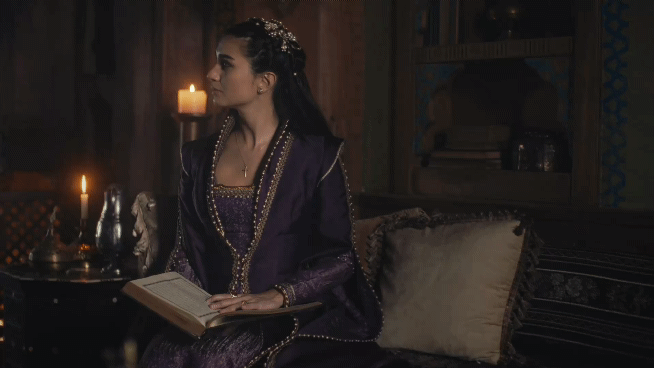



#history#ottoman#ottoman history#ottoman empire#valide mara hatun#mara brankovic#princess mara#tuba buyukustun#tuba büyüküstün#Mara despina hatun#Hatunlari#Ottoman valide#rise of empires ottoman#rise of empires: ottoman
61 notes
·
View notes
Text
Mara Brankovic




#history#ottoman#princess mara#mara brankovic#Mara hatun#Mara despina hatun#Hatun#ottoman princess#ottoman history#ottoman valide#Valide mara hatun#My gif#tuba buyukustun#tuba büyüküstün#rise of empires ottoman#rise of empires: ottoman#mehmed vs vlad
46 notes
·
View notes
Text
Mara Brankovic


#history#ottoman valide#ottoman history#valide mara hatun#Mara hatun#Princess mara#mara brankovic#Mara despina hatun#tuba buyukustun#tuba büyüküstün#rise of empires ottoman#rise of empires: ottoman
41 notes
·
View notes
Text
Mara Brankovic



#history#valide sultan#ottoman history#ottoman valide#ottoman#rise of empires: ottoman#rise of empires#mehmed vs vlad#princess mara#mara brankovic#valide mara hatun#Mara hatun#tuba buyukustun#tuba büyüküstün
37 notes
·
View notes
Text
Mara Brankovic



#history#ottoman#ottoman valide#ottoman history#ottoman empire#valide mara hatun#princess mara#mara brankovic#tuba buyukustun#tuba büyüküstün#rise of empires ottoman#rise of empires: ottoman
30 notes
·
View notes
Text
Mara Brankovic and Gülbahar Hatun




#history#valide sultan#ottoman history#ottoman valide#ottoman sultanas#Hatuns#valide mara hatun#princess mara#mara brankovic#Mara#Gülbahar hatun#Hatun#Gulbahar hatun#rise of empires ottoman#rise of empires: ottoman#mehmed vs vlad#ottoman princess#ottoman empire#ottoman
52 notes
·
View notes
Text


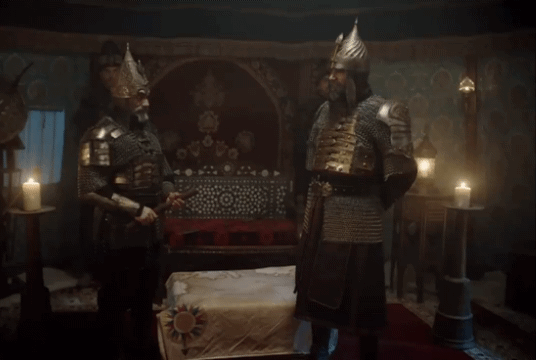

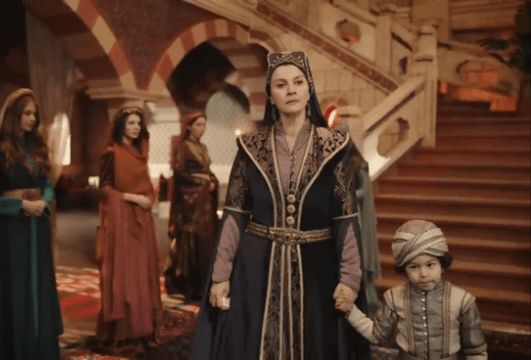




#history#ottoman history#ottoman#ottoman valide#ottoman sultanas#mehmed fetihler sultanı#sultan mehmed ii#mehmed ii gif#mehmed the conqueror#Murad#Sultan murad#sultán#turkish gif#mara hatun#murad#sultans
6 notes
·
View notes
Text
Mara Brankovic


#history#princess mara#mara brankovic#sultana#Ottoman woman#Woman in ottoman empire#Mara hatun#Hatun#rise of empires ottoman#rise of empires: ottoman#mehmed vs vlad#tuba büyüküstün#tuba buyukustun#Queen ♡#valide sultan#Ottoman valide#Mara despina hatun#My gifs
64 notes
·
View notes
Note
Your top 10 Ottoman ladies.
Hello! I have already answered this but they basically change every 2 weeks lmao so I’m happy to try again:
Haseki Hürrem Sultan
Nurbanu Valide Sultan
Kösem Valide Sultan
Bezmialem Valide Sultan
Nazperver Kadın, Third Imperial Consort of Mehmed V Reşad
Serfiraz Hanım, Second Ikbal of Abdülmecid I
Safiye Valide Sultan
Inşirah Hanım, Second Ikbal of Mehmed VI Vahideddin
Emine Nazikeda Kadın, Senior Imperial Consort of Mehmed VI Vahideddin
Mara Hatun, Serbian wife of Murad II
If you ask me next week, I’ll probably say something different lol
#anon#ask post#haseki hurrem sultan#nurbanu sultan#kosem sultan#bezmialem sultan#nazperver kadin#serfiraz hanim#safiye sultan#insirah hanim#emine nazikeda kadin#mara hatun
23 notes
·
View notes